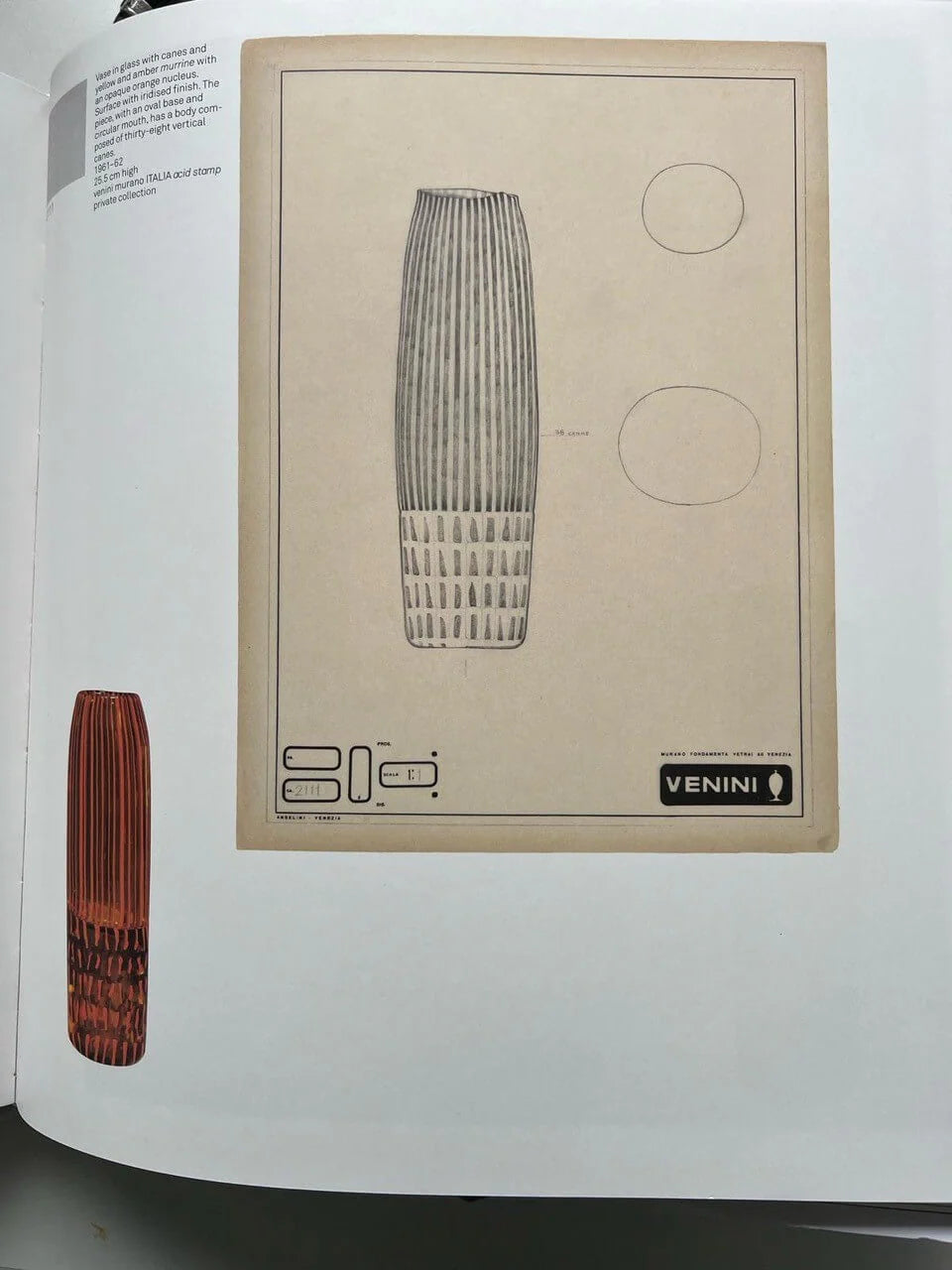Thomas Stearns (1936-2006): Unconventional Glass from Venini
An American artist, Thomas Stearns, held a residency at the prestigious Murano glassworks, Venini. His unconventional artistic methods sparked some controversy at Venini, as they strayed from the traditional glassmaking techniques. Working alongside Francesco 'Checco' Ongaro, a master glassmaker, Stearns bridged the language gap by using design sketches and clay prototypes to share their visions. Together, they produced a small collection of glass sculptures not aimed at widespread production. In 1962, Venini showcased six pieces by Stearns at the Venice Biennale exhibition, where they initially received the gold medal. However, the award was subsequently revoked upon discovering that the pieces were not crafted by Italian artisans, highlighting the Murano community's strong sense of tradition and exclusivity.
“I came to Venini with no previous knowledge of or experience in blown glass. There was very little going on in the United States in glass at that time, and, frankly, I had no particular interest in three dimensional forms.” Thomas Stearns
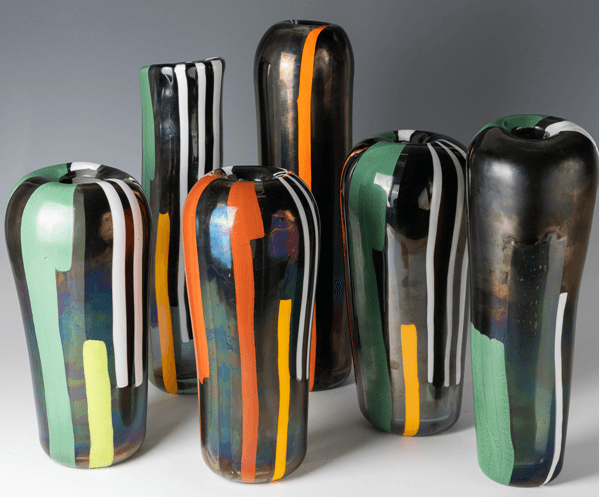
“I came to Venini with no previous knowledge of or experience in blown glass. There was very little going on in the United States in glass at that time, and, frankly, I had no particular interest in three dimensional forms.”
Mishaps and Mistakes
Mishapes and Mistakes
Thomas Stearns left us his memories of the important time in Venice in an essay:
“By the end of the second week, a most marvelous and magical process commenced within my aesthetic-conceptual mind's eye: idea upon idea for blown objects began to appear in my vision, not particularly from what I had recently been seeing, but rather from what I had observed as " mistakes ", "mishaps" and "blunders". The goal that I felt crystallizing within me was an aspiration to explore new directions and concepts in blown glass (rather than two-dimensional work)."
Maestro "Boboli", who was supposed to support him, reacted to Stearns' first drafts with rejection:
“When he finished with what he was doing, he looked at my clay model and drawings, stood up and commenced a tirade in Italian. The entire furnace room went silent. He finished and with a gesture of his hand waved me away. Not understanding a word of what had been said, but feeling his anger, I simply stood there bewildered.”
Stearns has his words translated and learns:
“ [...] the grand master had said: "For weeks you have stood over us like a bird. We have worked for centuries to create a perfect symmetry in glass. Now you bring your ideas, which have no symmetry, to insult us. You don't speak our language, either in Italian or in glass. Go away!"”
"Checco" Ongaro, who was then the youngest glassblower at Venini to achieve the rank of glass master and, having served as an apprentice under "Boboli," would eventually succeed him. His words in Stearns memory:
“Let's give this weird bird a try!”
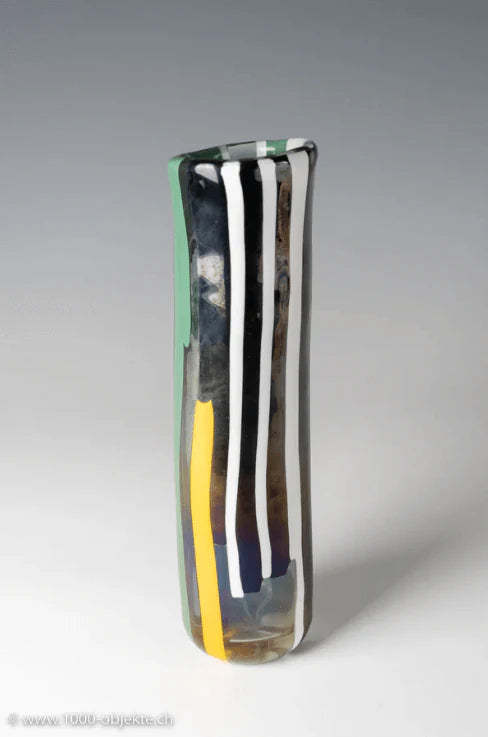
Traditional Methods Meet Innovative Designs
While at Venini, Stearns did not pick up the Italian language, maintaining his status as somewhat of an outsider, a factor that perhaps fueled his drive to innovate and expand the limits of his craft. Drawing inspiration from the Abstract Expressionist movement that was burgeoning in America, Stearns' works aimed to evoke emotion through their form and vibrant use of color. He frequently employed the "incalmo" technique, which involves merging two or more separate pieces to create distinct color transitions. At Venini, Stearns was matched with one of the youngest master glassblowers, "Checco" Ongaro, with whom he occasionally had artistic disagreements. Despite these differences, Ongaro and Stearns collaborated to produce sculptures that blended traditional methods with innovative designs. Due to their complexity, these outstanding pieces that Stearns created for Venini are among the rarest and most sought-after examples of significant Italian glass.
Driven by the quest for artistic evolution, Ohira pursued academic pursuits at the Venice Academy of Fine Arts from 1973 to 1978, immersing himself in the captivating realm of Murano glass. His enthusiasm and innate talent flourished, garnering prestigious accolades for his dissertation "The Aesthetics of Glass".
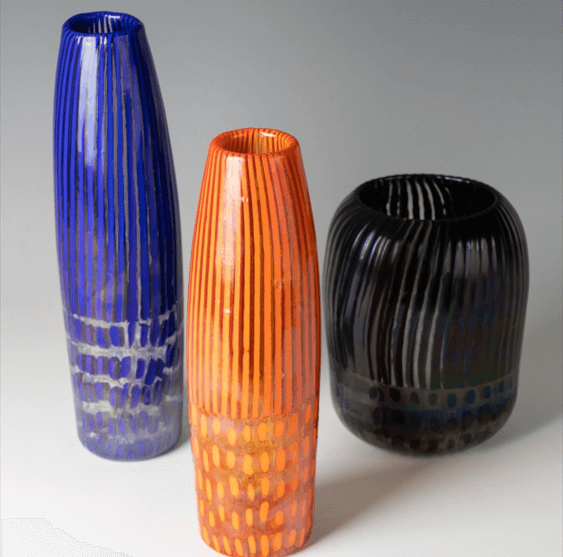
“My own naivety and eagerness to explore the medium led me into zealous experimentation; and the young Maestro ‘Checco’ Ongaro’s own efforts to prove his abilities lead him to stick out his neck by collaborating with me. The timing was just right making germane a situation of exploration and accomplishment. We each saw it as an opportunity for ourselves... and we all leapt in.“
Designer & Craftsman
Although Thomas Stearns was not the inaugural American to be employed at Venini, he was undoubtedly the most impactful. His tenure at the company significantly altered the traditional dynamics between designer and craftsman. Stearns' continual presence at the Venini furnace directly challenged the longstanding traditions and social hierarchies of Murano. The subsequent generation of American artists who trained at Venini, such as Dale Chihuly, Toots Zynsky, Richard Marquis, and others, are indebted to the pioneering and resolute efforts of Thomas Stearns.
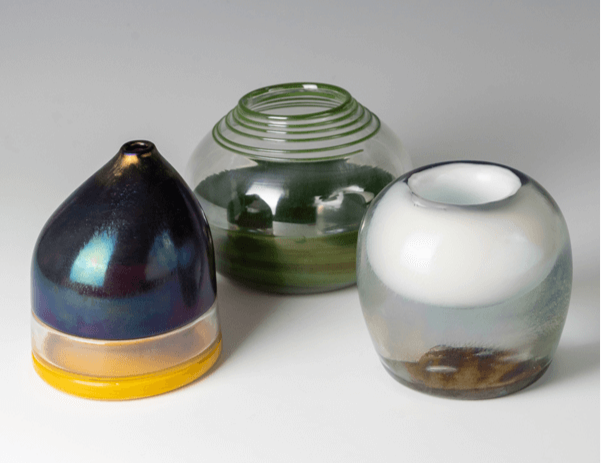

Facades of Venice
Among my works at Venini, the "Facades of Venice" series holds special significance for me. A total of ten pieces
were made under this title.
The piece being auctioned is the tenth and represents the pinnacle of my vision for this series. The first two pieces,
which were experimental and flat, were sold soon after I returned to the United
States. They were first exhibited in 1989 at New York's Muriel Karasik Gallery.
These works have been documented in several
publications: Muriel Karasik Gallery's "The Venetians: Modern Glass 1919-1990" (1989, no. 56), Fondazione Giorgio Cini's "Gli Artisti Di
Venini: Per una Storia Del Vitro D'Arte Veneziano" (1996, no. 224), and Anna Venini Diaz de Santillana's "Venini Catalog Raisonne."
Thomas Stearns, 2002
In the 1000 CollectionStearns Glass at Auctions: Highest Demands – Top Prices
Thomas Stearns' glassworks are considered rare, with significant losses during their production, and surface at auctions only every few years. A notable auction record was set by his work 'La Sentinella di Venezia' (The Sentinel of Venice), created in 1962. This piece, Stearns' final project at Venini, fetched $737,000 in 2018. It was a three-part conceptual sculpture that embodied his affection for Venice and his concerns for its preservation, blending multiple glassmaking techniques and showcasing a unique combination of styles and sculptural elements.
“All my artistic endeavors have been based on responses, which is to say they are products of my experience and inner feelings.”
Thomas Stearns
Discover Thomas Stearns Vases
View allThomas Stearns Glass Vases at 1000 Objekte
Peter Grünbaum has managed to add some famous vases by Thomas Stearns to his collection. Interested in exploring a vase of Artist Thomas Stearns? Select your favorite item from our collection here »
If you have any inquiries about our collection, or if you're in search of a particular rare vase to complete your own, please don't hesitate to contact us.
For a broader look at glass artistry, you are welcome to visit our Online Shop for Glass Art & Glass Objects!
